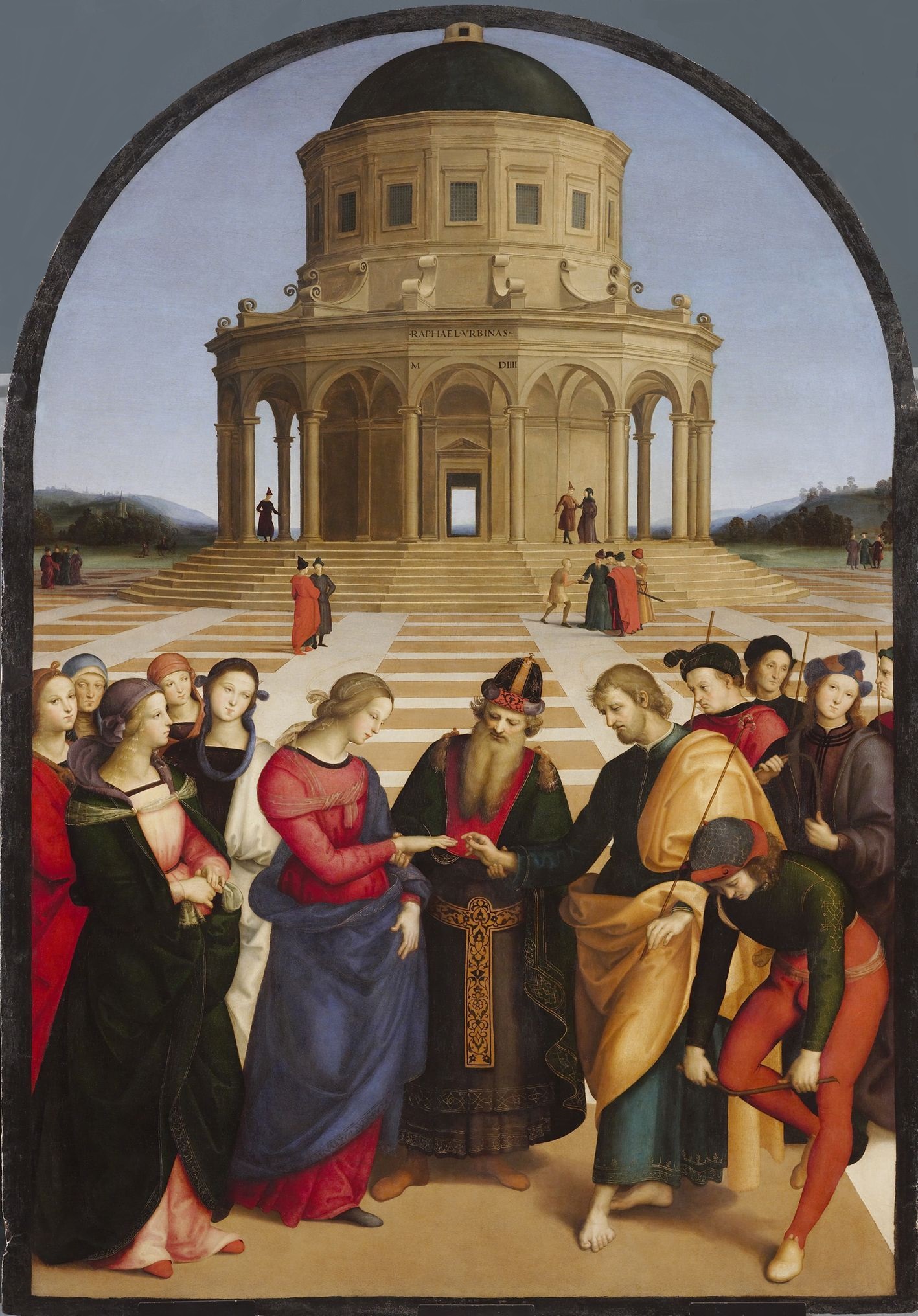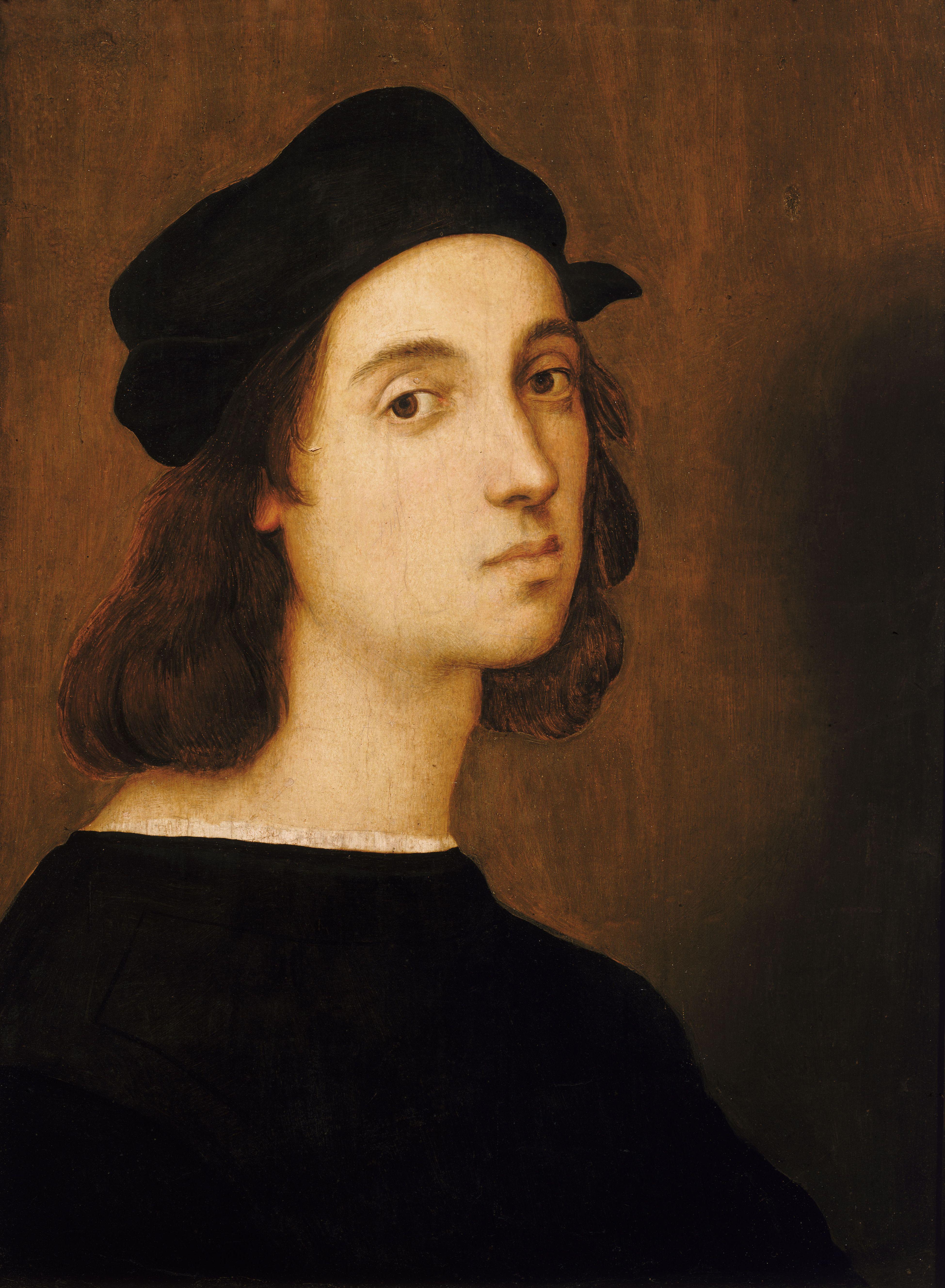The Marriage of the Virgin, also known as Lo Sposalizio, is an oil painting by the one of the most famous artists of the Renaissance, Raphael. Completed in 1504 for the Franciscan church of San Francesco, Città di Castello, the painting depicts a marriage ceremony between Mary and Joseph.
The scene is set in a large square overlooked by a large 16-sided round temple, which you enter through a staircase with an entrance door opening towards the horizon. In the middle of the portico, above the arch in the front of the temple door, is the artist’s signature “Raphael Urbinas” (Raphael from Urbino) and the date “MDIIII” (1504). In the foreground we see a marriage ceremony and we are spectators of the moment in which the spouses, Saint Joseph and the Virgin Mary, exchange wedding rings in front of the priest.
On the right is a young man breaking a twig with his knee, while four other young men behind Saint Joseph are showing twigs (referring to an episode from the Apocryphal Gospels). The Marriage of the Virgin, in fact, portrays an episode not described in one of the four canonical Gospels. This story focuses on the life of the young Virgin Mary, who spent her adolescence in the Jerusalem Temple. When she had to select a husband, she couldn’t choose among her suitors. So, the High Priest helped her by giving each man a twig and then waited for a sign ... the twig that bloomed was Joseph’s, the oldest suitor.
P.S. Raphael painted The Marriage of the Virgin having in mind the altarpiece with the same subject by Perugino, which is featured in our Italian Renaissance 50 Postcards Set. Also, enjoy a fascinating analysis of the two masterpieces by the disciple, Raphael, and his great teacher, Perugino.


 Raphael Santi
Raphael Santi